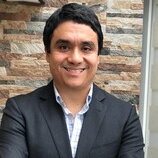Development of Flotation of Chalcopyrite
A special issue of Minerals (ISSN 2075-163X). This special issue belongs to the section "Mineral Processing and Extractive Metallurgy".
Deadline for manuscript submissions: 31 October 2024 | Viewed by 214
Special Issue Editor
2. Principal Researcher of the Water Research Center for Agriculture and Mining CRHIAM (ANID/FONDAP/15130015), Victoria 1295, Barrio Universitario, Concepción, Chile
Interests: surface chemistry; froth flotation; rheology of mineral suspensions; geometallurgy; clay minerals in flotation; seawater in mineral processing; sensors development
Special Issues, Collections and Topics in MDPI journals
Special Issue Information
Dear Colleagues,
Chalcopyrite is an important sulfide mineral in the process of flotation because it is the primary source of copper in many ore deposits. Flotation is the most widely used method for concentrating chalcopyrite. Flotation of chalcopyrite includes complex phenomena that utilize different chemicals (collectors, frothers and modifiers) and conditions to separate the mineral from gangue minerals such as silicates and pyrite.
The flotation of chalcopyrite from porphyry and non-porphyry ores is influenced by a variety of factors that can impact the efficiency of the separation process. Some of the key factors affecting chalcopyrite flotation from porphyry ores include mineralogy (grain size, associations, liberation, gangue, phyllosilicates, etc.), particle size, physicochemical conditions (pH, reagents, and Eh), water quality, equipment and process design, etc. Understanding and optimizing these factors are essential for achieving efficient chalcopyrite flotation and maximizing the recovery of valuable copper minerals while minimizing the loss of valuable minerals and the generation of waste. Continuous research and process improvements aim to address these factors and enhance the sustainability and effectiveness of chalcopyrite flotation processes.
We sincerely invite you to contribute to this Special Issue, entitled “Development of Flotation of Chalcopyrite”. Papers from academia and industry are welcome.
Dr. Leopoldo Gutierrez
Guest Editor
Manuscript Submission Information
Manuscripts should be submitted online at www.mdpi.com by registering and logging in to this website. Once you are registered, click here to go to the submission form. Manuscripts can be submitted until the deadline. All submissions that pass pre-check are peer-reviewed. Accepted papers will be published continuously in the journal (as soon as accepted) and will be listed together on the special issue website. Research articles, review articles as well as short communications are invited. For planned papers, a title and short abstract (about 100 words) can be sent to the Editorial Office for announcement on this website.
Submitted manuscripts should not have been published previously, nor be under consideration for publication elsewhere (except conference proceedings papers). All manuscripts are thoroughly refereed through a single-blind peer-review process. A guide for authors and other relevant information for submission of manuscripts is available on the Instructions for Authors page. Minerals is an international peer-reviewed open access monthly journal published by MDPI.
Please visit the Instructions for Authors page before submitting a manuscript. The Article Processing Charge (APC) for publication in this open access journal is 2400 CHF (Swiss Francs). Submitted papers should be well formatted and use good English. Authors may use MDPI's English editing service prior to publication or during author revisions.
Keywords
- chalcopyrite
- flotation
- copper sulfides
- water quality
- clays
- seawater





